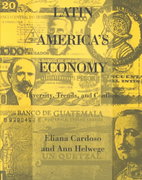Question
Suppose there are two types of people who need health insurance; high-risk and low-risk consumers. High-risk consumers have a relatively high probability of needing expensive
Suppose there are two types of people who need health insurance; high-risk and low-risk consumers. High-risk consumers have a relatively high probability of needing expensive medical care and on average incur $2,000 of medical expenses per year. The high-risk consumers would be willing to pay up to $2,500 for insurance that covers all their medical bills. Low-risk consumers would be willing to pay up to $1,400 for full-coverage insurance and on average would incur on average $1,200 in medical bills.Assume 1/3 of all consumers are high-risk and the remaining 2/3 of consumers are low-risk. Consumers know whether they are high-risk or low-risk. The insurance company knows 2/3 of all consumers are low-risk but cannot identify which consumers are low-risk.
- If all consumers bought insurance, what price must the insurance company charge to break even in expectation?That is, what price must the insurance company charge so that the expected payments equals the premium?
- Which consumers would purchase insurance at that price?
- Are there wealth-creating transactions that are not consummated because of the information asymmetry?
- If the low-risk consumers were willing to pay $1,500 for the insurance, how would your answers to questions 2 and 3 change?
Step by Step Solution
There are 3 Steps involved in it
Step: 1

Get Instant Access to Expert-Tailored Solutions
See step-by-step solutions with expert insights and AI powered tools for academic success
Step: 2

Step: 3

Ace Your Homework with AI
Get the answers you need in no time with our AI-driven, step-by-step assistance
Get Started


